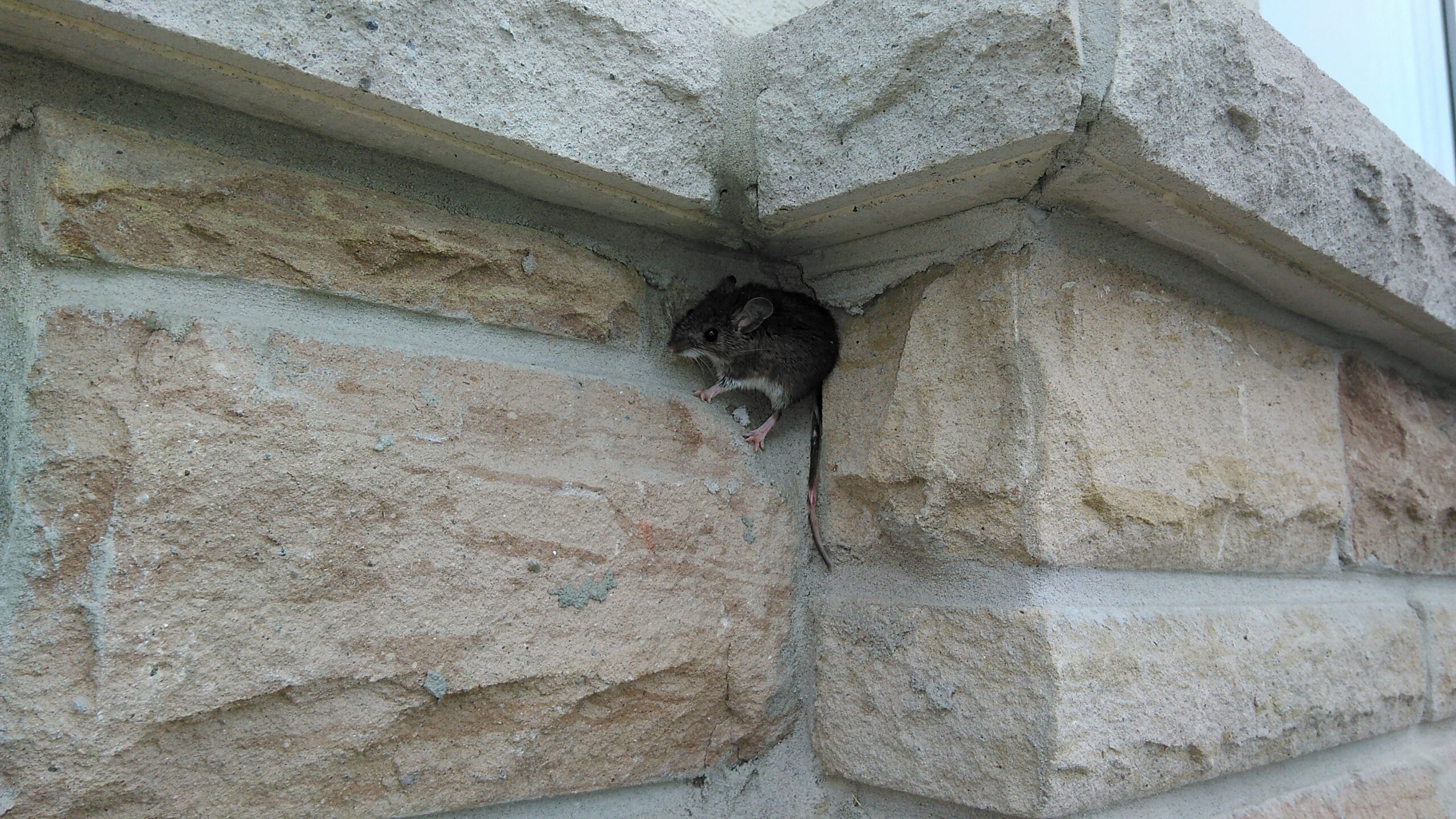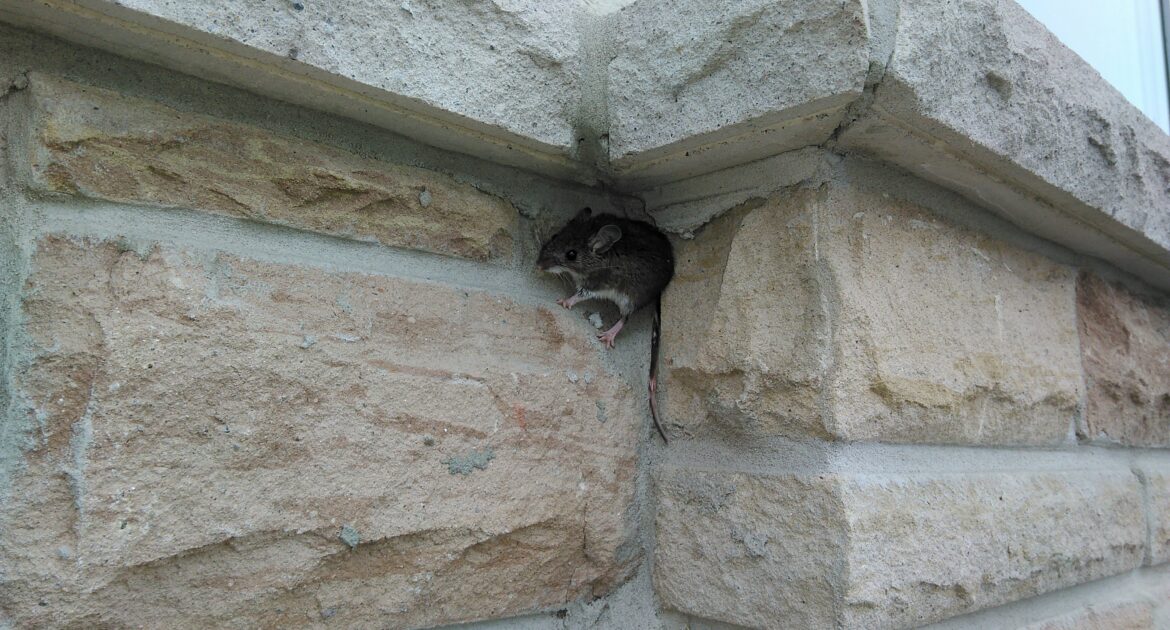One of the most disturbing things about a mouse in the house is that it can be present without you seeing it. Mice are nocturnal and, as prey animals, are wary of getting too close to larger animals or going out in the open where they are more vulnerable. Even if you do not see mice, they leave behind evidence of their presence:
- Droppings
- Chew marks on furniture
- Holes in walls
- Stains along baseboards
- Ripped up paper or fabric (used for nesting material)
- Torn food containers
If you see signs such as these, it is important to take action immediately, given the exceptional rate at which mice breed. However, some responses are more effective than others. Your first reaction may be to purchase repellent sprays, poison, or traps to get rid of mice, but these methods can be inhumane and may have a negative effect on you and your family. Their effectiveness has never been proven, and they don’t really deal with the underlying problem.
There’s No Regulation on Commercial Pest Repellents
Although they’re packaged and branded by names you know and love, there’s nothing outlining the effectiveness of sprays. Companies do not have to prove it works before taking it to market. So, a lot of the time a product’s description says it’s guaranteed to work, but it doesn’t do much other than releasing a strange odour. Also, there are no laws as to what they are allowed to put into the spray.
Commercial Spray, Poison, and Traps Have Never Been Proven To Work
It can sometimes take hours for a mouse injured in a trap to die. Not only is this cruel, causing the animal to suffer unnecessarily, but it can also be inconvenient. The mouse may die in an inaccessible place, where the carcass starts to rot. A rotting mouse carcass can produce an odour disproportionate to its small size and release pathogens into the home. The trap itself may pose a risk as it can injure small children or pets.
Furthermore, trapping is unlikely to be effective as mice can reproduce every 21 days, and young females can start producing new litters at 6 to 8 weeks old. It would be impossible to set up enough traps to catch them all. Additionally, a mouse that survives an encounter with a trap learns to avoid it in the future.
Like traps, mouse poison is inhumane because of the unnecessary suffering it causes to the mice, which do not die right away. The poison takes time to work, during which time the mouse could spread its residue over kitchen counters, where it could contaminate food, or across the floor, where it could get on the hands or paws of young children or pets. If these vulnerable members of your household find and swallow the poison itself, the consequences could be fatal. Furthermore, a pet that finds a poisoned mouse that has not yet died could ingest it and be poisoned indirectly.
A mouse repellent spray purported to keep rodents away without harming them may seem like a more humane approach. However, even if these repellents do not harm the mice, they may not be effective at keeping them away. Eventually, as the mice get used to the smell, they start to ignore it.
None of these approaches address the underlying issue that led to the infestation in the first place: Holes in the home’s exterior that are wide enough for mice to fit through. As long as these holes remain open, the mice can keep coming back.
It May Be Possible To Prevent Mouse Infestation
Mice get into homes looking for food and shelter. It may be possible to deter them by blocking their access and denying them what they need:
- Seal all points of entry
- Remove food sources
- Keep a clean living area
- Find sealable containers for loose food items
- Remove clutter from the dustiest corners
- Call a Professional
Skedaddle Works With You To Remove Mice
Though they don’t mean harm, mice can cause extensive property damage by chewing on electrical wiring. They can expose you to dangerous diseases through their excrement or parasites.
Fortunately, you do not have to face them alone. Our multistep process is effective at removing rodents from your home thoroughly and humanely:
-
We assess the extent of the problem. We search for mice in walls, floors, ceilings, and other common places where they hide and use a flashlight to check for the entry points by which they get in and out. We look particularly for mouse babies that are typically very small and well hidden.
-
We remove the mice from the home to the outside, allowing mothers to reunite with their babies.
-
We use screens or sealants to close off entry points to prevent mice from getting back in.
-
We clean and clear areas where the mice have been, disinfecting urine and feces, removing any dead rodents, and repairing any damage the mice have caused.
Mice Removal Is Available From Skedaddle
It is easy to underestimate the ability of mice to make their way into your home or business. Mice have a remarkable ability to compress their bodies to fit through small openings. They only need a gap of one-quarter of an inch wide to make their way into a building.
No method of rodent control is effective unless it involves sealing up these potential entry points to prevent more mice from getting inside the house. Furthermore, there are many reasons why the common methods of rodent control, such as poison, traps, and repellents, don’t work as well as they are advertised to do and can be inhumane as well.
Skedaddle has been providing wildlife removal services to homeowners and businesses for over 30 years. We stand behind our work with a lifetime guarantee on all materials and services. When you trust Skedaddle for wildlife removal, we help you protect your property both now and in the future.
Humane wildlife control includes mouse removal but is not limited to it. Find out more about all the services we provide in the Hamilton.




